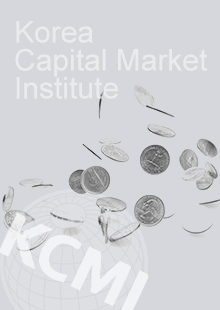Find out more about our latest publications

An Alternative to the Price-Limit System on the Korea Exchange
Research Papers 08-01 Mar. 17, 2008
- Research Topic Capital Markets
- Page 90
- No other publications.
- No other publications.
From its inception, the Korea Exchange (KRX) employed a price-limit system on individual stocks for the purpose of protecting bona fide investors from unnecessary or temporary anomalies in stock price and also preventing market conditions from deteriorating due to overreactions. However, the decrease in volatility and the consequences of the rise of fund investments have significantly improved overall market quality recently. Despite this, the KRX has maintained its price limit at 15% for more than a decade. It is an appropriate time to examine the effectiveness of the KRX price-limit system and adjust and improve it.
volatility.
There are two distinct views on price-limit systems and their effects on volatility. Those who favor price-limit systems argue they provide a cooling-off period which gives investors time to reappraise information and protects them against severe changes that do not reflect changes in true value. It also provides investors information on the order imbalance, which helps the price return quickly to the equilibrium price. The opposing side argues that the price-limit system simply delays the speed of price adjustment to the new information. So rather than decreasing volatility, it serves to interfere with the adjustment to equilibrium. Almost all the theoretical and empirical studies on the effects of price-limit system on individual stocks find that the harm substantially outweighs the benefit.
In comparison to the year 1999, when the 15% price limit was
first enforced, the volatility and the frequency of upper and lower limit-hits in 2005 has significantly diminished. So did the idiosyncratic risk of individual stock returns, estimated by using the Gibbs-sampling method. For penny stocks, the price limit is too restrictive. These results imply that the current 15% price limit does not restrain price volatility, indicating that it does not function as anticipated when it was introduced by the KRX.
First, price limits for individual stocks should be phased out and ultimately abolished. It is appropriate to expand the limits on stocks in phases, starting with actively traded stocks like those composing the KOSPI50 index. Simultaneously, it is critical to introduce the European VI system as an alternative. Second, for penny stocks, the current price limit should be expanded. Otherwise, the current KRX liquidity provider (LP) system should be improved and then applied to these stocks. Third, various order types such as stop-loss orders should be introduced in order to protect individual investors.
In this report, we examined whether the current price-limit system is effective, and what options or improvements are available to increase the stability of the market system, protect investors, and enhance price discovery. More specifically, we first studied various types of price-limit systems used by other
countries’ exchanges. Then, we thoroughly reviewed the theoretical and empirical studies on price-limit systems. Next, we did empirical analyses regarding the effects of expanding the price limit on volatility, frequency of upper and lower limit-hits, and idiosyncratic risk of individual stock returns. For idiosyncratic risk, we used the Gibbs-sampling method. Finally, we derived implications from these studies and analyses, and constructed recommendations for improving the KRX price-limit system.
Only Asian exchanges use explicit price-limit systems for individual stocks like those used by the KRX. The NYSE does not need a price-limit system since they have market-makers. The European exchanges, which share a trading mechanism similar to the KRX, also do not have explicit price-limit systems, but instead have a volat